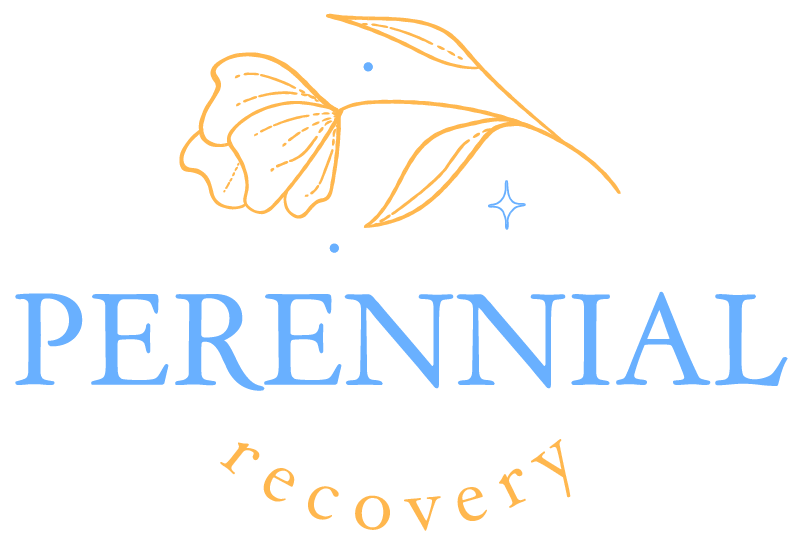Understanding the Cost of Drug and Alcohol Rehab
When it comes to seeking treatment for drug and alcohol addiction, one important aspect to consider is the cost of rehab. Understanding the factors that contribute to the cost can help individuals make informed decisions about their recovery journey. In this section, we will explore the importance of rehab and the factors that affect its cost.

The Importance of Rehab
Rehabilitation programs play a crucial role in helping individuals overcome drug and alcohol addiction. These programs provide a structured and supportive environment where individuals can receive professional help to address their substance abuse issues. Rehab offers a range of services, including detoxification, therapy sessions, counseling, and aftercare support, all of which are designed to promote long-term recovery and sobriety.
By participating in rehab, individuals have the opportunity to develop coping mechanisms, gain insights into the root causes of their addiction, and acquire the necessary skills to maintain a drug-free life. The benefits of rehab extend beyond the initial treatment period and can have a significant positive impact on an individual’s overall well-being and future prospects.
Factors Affecting the Cost of Rehab
Several factors influence the cost of drug and alcohol rehab. It’s important to consider these factors when estimating the financial implications of seeking treatment:
- Type of Rehab Program: There are different types of rehab programs available, each with its own cost structure. Inpatient rehab, where individuals reside in a facility for the duration of treatment, is generally more expensive than outpatient rehab, which allows individuals to live at home while attending therapy sessions and counseling.
- Treatment Duration: The length of the rehab program can significantly impact the overall cost. Longer treatment durations tend to be more expensive than shorter programs. The duration of treatment depends on several factors, including the severity of addiction and individual progress.
- Location of the Facility: The geographic location of the rehab facility can affect the cost. Rehab centers in urban areas or desirable locations may have higher fees compared to those in rural or less sought-after areas.
- Level of Care Required: The level of care needed for an individual’s specific addiction and recovery needs can influence the cost. Some individuals may require specialized services, such as dual diagnosis treatment for co-occurring mental health disorders, which can contribute to higher costs.
To give a general idea of the cost range, here is a table displaying the average cost of different types of rehab programs:

It’s important to note that these costs are estimates and can vary depending on various factors, including the specific facility, location, and level of amenities provided.
Understanding the importance of rehab and the factors that affect its cost can help individuals plan and navigate the financial aspects of seeking treatment for drug and alcohol addiction. Exploring different rehab options, evaluating insurance coverage, and considering available financial assistance can all contribute to making informed decisions about the most suitable and affordable treatment options.
Types of Rehab Programs
When seeking drug and alcohol rehab, it’s important to understand the different types of programs available. Rehab programs vary in their intensity, structure, and level of support. Here, we will explore three common types of rehab programs: inpatient rehab, outpatient rehab, and luxury rehab.
Inpatient Rehab
Inpatient rehab, also known as residential rehab, offers a comprehensive and immersive treatment experience. Individuals in this program reside in a specialized facility for a predetermined period, typically ranging from a few weeks to several months. Inpatient rehab provides a highly structured and supportive environment, allowing individuals to focus solely on their recovery.
The cost of inpatient rehab can vary depending on factors such as the location of the facility, amenities provided, and the duration of treatment. Below is an overview of the average cost range for inpatient rehab programs:

Outpatient Rehab
Outpatient rehab offers flexibility for individuals who do not require 24/7 supervision or a residential setting. In this program, individuals attend treatment sessions at scheduled times and continue living at home or in a supportive environment. Outpatient rehab allows individuals to maintain their regular responsibilities while receiving the necessary treatment and support.
The cost of outpatient rehab is generally lower compared to inpatient rehab. However, the cost can still vary based on factors such as the frequency and duration of sessions, the location of the facility, and the level of care provided. Below is an overview of the average cost range for outpatient rehab programs:

Luxury Rehab
Luxury rehab programs provide a high-end treatment experience with additional amenities and luxury accommodations. These programs often offer a more exclusive and private setting, along with additional services such as spa treatments, gourmet meals, and holistic therapies. Luxury rehab aims to provide a comfortable and luxurious environment while delivering comprehensive treatment.
The cost of luxury rehab programs is typically higher compared to traditional inpatient rehab programs. The cost can vary significantly based on factors such as the location, duration of treatment, amenities provided, and level of customization. Below is an overview of the average cost range for luxury rehab programs:

Understanding the different types of rehab programs can help individuals make informed decisions about their treatment options. The choice between inpatient rehab, outpatient rehab, or luxury rehab depends on factors such as the severity of the addiction, personal preferences, and financial considerations. It’s important to consult with a healthcare professional or addiction specialist to determine the most suitable program based on individual needs and circumstances.
Cost Considerations
When it comes to drug and alcohol rehab, the cost can vary depending on several factors. Understanding these cost considerations is essential for individuals seeking recovery and their loved ones. Here, we will explore three key factors that can influence the cost of rehab: treatment duration, location of the facility, and the level of care required.
Treatment Duration
The duration of the rehab program is a significant factor in determining the overall cost. The length of treatment can vary depending on individual needs and the severity of the addiction. While some programs may last for a few weeks, others can extend to several months or even longer.
The table below provides an overview of the average cost range based on treatment duration:

It’s important to note that these figures are approximate and can vary depending on the specific rehab center and location.
Location of the Facility
The location of the rehab facility can also impact the cost. Facilities situated in urban areas or regions with a higher cost of living tend to have higher fees compared to those in rural areas. Additionally, the availability of specialized treatment programs and amenities can contribute to the overall cost.
The table below provides a general overview of the cost differences based on location:

These figures serve as a rough estimate and can vary depending on the specific facility and its offerings.
Level of Care Required
The level of care required for an individual’s recovery plays a significant role in determining the cost of rehab. Some individuals may require intensive, round-the-clock care in an inpatient setting, while others may be suitable for outpatient programs that offer more flexibility. The level of care needed is determined through an assessment conducted by professionals.
The table below provides a general overview of the cost differences based on the level of care required:

It’s important to note that these figures are approximate and can vary depending on the specific facility, location, and treatment program.
Considering these cost considerations can help individuals and their families make informed decisions when seeking drug and alcohol rehab. It’s crucial to assess individual needs, financial resources, and the available options to find a program that provides the necessary support for a successful recovery journey.
Financial Options for Rehab
When it comes to the cost of drug and alcohol rehab, there are various financial options available to help individuals access the treatment they need. Understanding these options can be instrumental in making rehab more affordable and accessible. Here are three common financial options to consider:
Insurance Coverage
One of the primary ways individuals can cover the cost of rehab is through insurance coverage. Many health insurance plans offer coverage for substance abuse treatment, including both inpatient and outpatient rehab programs. The extent of coverage can vary depending on the insurance provider and the specific plan.
To determine if rehab is covered by insurance, individuals should review their policy or contact their insurance provider directly. It’s important to understand the details of the coverage, including any deductibles, co-pays, or limitations on the length of treatment. Seeking pre-authorization from the insurance company can help avoid any surprises regarding coverage.
Financing Options
For those who do not have insurance coverage or need additional financial assistance, financing options can help make rehab more affordable. Some rehab facilities offer financing plans that allow individuals to pay for treatment in installments over time. These plans may come with interest or fees, so it’s crucial to carefully review the terms and conditions before committing.
Additionally, individuals can explore personal loans, lines of credit, or credit cards to fund their rehab expenses. It’s essential to consider the interest rates, repayment terms, and any associated fees when opting for these financing options. Consulting with a financial advisor can provide valuable guidance in choosing the most suitable financing option.
Scholarships and Grants
In certain cases, individuals may be eligible for scholarships or grants to help cover the cost of rehab. These financial assistance programs are typically offered by nonprofit organizations, government agencies, or private foundations. Eligibility criteria and application processes vary, but they often consider factors such as financial need, specific demographics, or the type of addiction being treated.
Researching and applying for scholarships and grants specific to drug and alcohol rehab can provide individuals with additional financial support. Online directories and resources can help identify relevant opportunities. It’s important to note that these programs may have limited funding, so early application is recommended.
Considering these financial options can help individuals navigate the cost of drug and alcohol rehab. Whether through insurance coverage, financing options, or scholarships and grants, seeking the necessary financial support is essential to accessing quality treatment. By exploring these avenues, individuals can take a step closer to recovery without being overwhelmed by the financial burden.
Making Informed Decisions
When it comes to the cost of drug and alcohol rehab, making informed decisions is crucial. It involves carefully evaluating treatment options, considering long-term benefits, and seeking professional advice to ensure the best outcomes for individuals seeking recovery.
Evaluating Treatment Options
When exploring treatment options for drug and alcohol rehab, it’s important to consider various factors. Evaluate the different types of programs available, such as inpatient rehab, outpatient rehab, and luxury rehab. Each program has its own advantages and considerations in terms of cost, level of care, and treatment approach.

Consider the specific needs of the individual seeking treatment, along with their support system and environmental factors. This will help determine which treatment option is most suitable and cost-effective in the long run.
Considering Long-Term Benefits
While the cost of drug and alcohol rehab may seem significant, it’s essential to consider the long-term benefits and potential cost savings associated with successful recovery. By investing in comprehensive treatment, individuals have a greater chance of achieving lasting sobriety, improving their overall health and well-being, and avoiding potential legal and financial repercussions.
Moreover, recovery from substance abuse can lead to increased productivity, improved relationships, and a better quality of life. These long-term benefits often outweigh the initial financial investment in rehab.
Seeking Professional Advice
Navigating the cost of drug and alcohol rehab can be overwhelming. Seeking professional advice from addiction specialists, counselors, or treatment facility representatives can provide valuable insights into available resources and financial assistance options.
These professionals can help assess individual circumstances, including insurance coverage, financial capabilities, and specific treatment needs. They can guide individuals and their families through the decision-making process, ensuring that the chosen treatment option aligns with their goals and budget.
By seeking professional advice, individuals can gain clarity on the cost of rehab, explore potential financial options, and make well-informed decisions that prioritize their recovery journey.
Remember, the cost of drug and alcohol rehab is an investment in health, well-being, and a brighter future. By carefully evaluating treatment options, considering long-term benefits, and seeking professional guidance, individuals can navigate the financial aspects of rehab with confidence and focus on their path to recovery.
Sources
https://drugabusestatistics.org/cost-of-rehab/
https://alcohol.org/rehab-centers/free/



